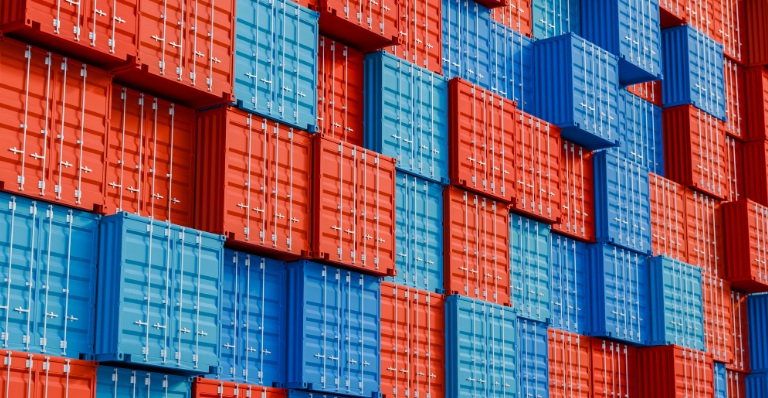In our recent Global Economic Outlook, EDC Economics revised our growth forecast for the global economy to 4.8% this year, before moderating to a still high 4.3% in 2023. Not bad, right? It seems like the economic data have done a good job decoupling from the COVID data. But, unfortunately, the strength of the global economy is also at the root of a lot of the stresses we’re experiencing today, including supply chain disruptions.
Part of the explanation can be found not in the supply chains themselves, but in the manufacturing processes that companies have adopted, in the name of enhanced productivity. The just-in-time manufacturing process, popularized by Toyota, was developed with tightly knit, geographically proximate suppliers in mind. But, the complex, long-distance supply chains that have come to define today’s globalized economy aren’t meant to handle serious disruptions, setting the preconditions for what we’re experiencing today.
When the pandemic hit, production collapsed—either intentionally—as producers slashed sales forecasts—or unintentionally—as COVID countermeasures forced workers to stay home. For a very brief period, that made sense. But, suddenly, we unleashed a wave of massive and unprecedentedly co-ordinated public stimulus measures. Interest rates were cut, central banks loaded up their balance sheets and governments launched enormous stimulus packages.
However, in lockdown, people had fewer ways to spend that money. Vacations were cancelled, people stopped going to restaurants, we didn’t have to commute to work anymore. The money that used to go into leisure and hospitality services, into transportation, was either put away for a rainy day or went into ordering more stuff online. We changed what we bought and how we bought it. How many of us converted that annual vacation into a new backyard deck? That daily commute into a computer upgrade?
We went from zero to 100 in a very short period of time, and goods suppliers couldn’t handle it. And so, imagine the impact further upstream of this incredible surge in consumer demand. The world’s stocks of raw material stretched beyond capacity. Think about oil and gas, key industrial metals, like copper, and metals used in electric vehicle batteries. What did this shortage of raw materials then mean for the factories assembling key components? Those intermediate goods that go into the final products that you and I were consuming at an ever-increasing rate.
It also didn’t help that we continued to see pandemic-related factory closures in key parts of Southeast Asia. And this is where a zero-COVID policy can be as disruptive as it is ineffective. The average wait-time for chip delivery to factories more than doubled, from about 13 weeks before the pandemic to almost 26 weeks on average today. It’s even longer for trailing edge chips, like microcontrollers, which are key to vehicle assembly.
You should also check out
With growing risks, Canadian companies face new challenges. EDC’s Global Economic Outlook offers insights to help you make better business decisions.
In addition to these supply-demand imbalances, as shipping velocity rose, the global shipping industry struggled to keep pace. Container and vessel shortages, as well as capacity constraints at ports, put a strain on the shipping industry, leading to port congestion, ship backlogs and turnaround times 10-times their normal average. And events like last year’s Suez Canal blockage, not to mention the flooding in British Columbia, certainly don’t help.
It’s during times like these, that we usually start to hear rumblings around a rollback of one of the main tenets of globalization, often referred to as reshoring or back-shoring. But we believe that the quest for profit maximization in a free market makes global supply chains an inevitability over the long run, and globalization unlikely to reverse course—barring massive structural changes to the global trade paradigm. As long as one company benefits from sourcing factors of production at their lowest cost, others will have to follow. Additionally, revamping complex production structures spread across different countries takes time, and money, and may not lead to the most efficient outcomes.
While we’re not in the business of forecasting epidemiological data, as COVID restrictions ease, some of those dollars going into consumer durables will flow back into “experiences,” easing demand pressures. Additionally, fewer COVID-related factory closures along the supply chain will help lower supply constraints.
In the meantime, we expect a more nuanced impact on global trade, including a reassessment of so-called “strategic” industries to include medical supplies, trade infrastructure and critical industrial technologies. Companies, too, have a role to play. Shifting away from just-in-time delivery toward just-in-case inventory and exploring multiple sources of materials will enhance supply chain resilience. Investment in warehouse capacity and technologies can also help drive growth and productivity.
The bottom line?
Reports of the death of globalization have been greatly exaggerated, again. If anything, current disruptions will help inspire a new era of supply chain management, characterized by even greater productivity and enhanced resiliency.
This commentary is presented for informational purposes only. It’s not intended to be a comprehensive or detailed statement on any subject and no representations or warranties, express or implied, are made as to its accuracy, timeliness or completeness. Nothing in this commentary is intended to provide financial, legal, accounting or tax advice nor should it be relied upon. EDC nor the author is liable whatsoever for any loss or damage caused by, or resulting from, any use of or any inaccuracies, errors or omissions in the information provided.







